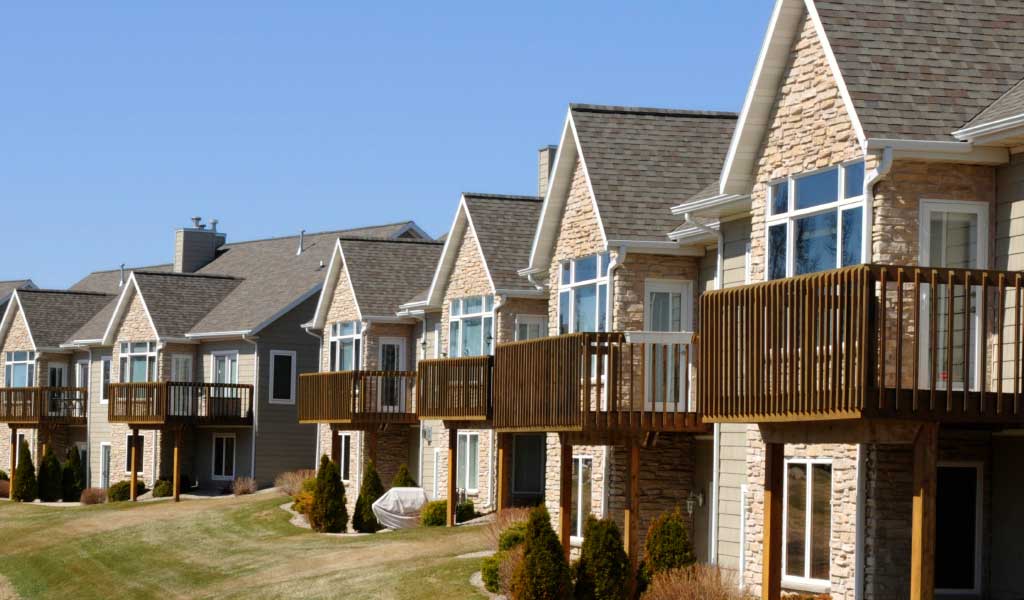Stillwater, MN, is considered to be a year-round travel destination. It’s just as picturesque in the winter as it is in the summer. During the colder months of the year, Stillwater may be coated in a dusting of sparkling snow. In the fall, the area bursts with color from the changing trees. The mild summers bring people out walking along the St. Croix River. In the spring, parks and bike trails beckon residents and visitors to get outdoors with seasonal blooms.
Notable Stillwater
Stillwater is part of the Twin Cities metropolitan area. The city has received many awards and recognitions. It has been voted one of the Most Romantic Cities, Best Minnesota Weekend Getaways, Best U.S. Towns for Antiquing and Best American Towns for Fall Colors.
Stillwater, MN, Climate
Stillwater gets less rain than the national average each year. The average annual rainfall in the town is 32 inches, compared with a U.S. average of 37. However, the average snowfall is 40 inches per year. The average city in the U.S. gets only 25 inches of snowfall a year.
Although the winters can be cold and snowy, the summers are typically beautiful. The average high in July is 85, according to Sperling’s Best Places. The comfort rating, which takes into account humidity during the summer months, is 48 out of 100. Since the city is not located in a particularly dry area, this figures as relatively comfortable.
Storm Risks in Stillwater
Snow
Snowstorms and blizzards can put homes in the Stillwater area at risk. One of the biggest blizzards to hit the Stillwater area was the Halloween Blizzard of 1991. That October, the Minnesota Twins had just celebrated their World Series victory. A few days later, it began to snow on Halloween. It snowed for three days straight.
It was considered one of the worst blizzards in Minnesota history. The storm began with freezing rain that kept most trick-or-treaters indoors. It continued with snow that accumulated through November 2.
Heavy winds gusted, collecting snow in drifts that were up to 10 feet deep. Snow that settled over the ice collapsed many rooftops in the area. Police officers helped the community by traveling around on snowmobiles.
Tornadoes
Snow and bitter cold aren’t the only risk for residents of Stillwater, MN. The city is considered to have a high risk for tornadoes, according to Home Facts. There are about two tornadoes a year in Stillwater, causing an average of one death annually. There have been 116 tornadoes in the area since 1950. The largest tornado took place in 1958. That tornado injured 74 people and caused 21 fatalities.
Lightning
Tornadoes can pop up during severe thunderstorms. Thunderstorms can also bring deadly lightning strikes to the area. Lightning can start fires that begin in the attic and aren’t noticed immediately. Lightning can also topple nearby trees that can fall onto homes, causing severe damage to roofs.
If lightning strikes your home, you may need to replace your roof. Lightning can puncture the roof materials, creating a hole at the moment of impact. The energy from a lightning strike can also send shingles flying. Lightning moves through a home extremely quickly. Even if you don’t experience a fire from a lightning strike, you should always inspect your roof afterward.
Hail
Although hail appears in chunks of frozen ice, it is not typically associated with winter weather. Hail is not to be confused with sleet, which is a form of freezing rain that can coat surfaces and electrical wires with ice during the colder months. Hail can happen any time of year.
Severe thunderstorms often bring hail. Stillwater had six reports of hail in 2015 and four reports of hail in 2012. Although hail is not common in Stillwater, it can be damaging when it does occur. The largest hail that was recorded in 2015 was 1.75 inches in diameter.
Hail can crack wooden or vinyl shingles, dent almost any surface and remove the gravelly coating of asphalt roof shingles. This can leave your roof open to damage from less extreme weather, such as spring rains and winter winds.
After any type of severe weather, you should inspect your roof and home for damage. Local professionals know what to look for and can spot the signs of damage that you might miss. They can also look for regular wear and tear that could be exacerbated in a storm. Protect yourself from snow, ice, lightning, tornadoes and hail if you live in the Stillwater, MN, area, by keeping your roof well-maintained and repairing or replacing it as necessary.
